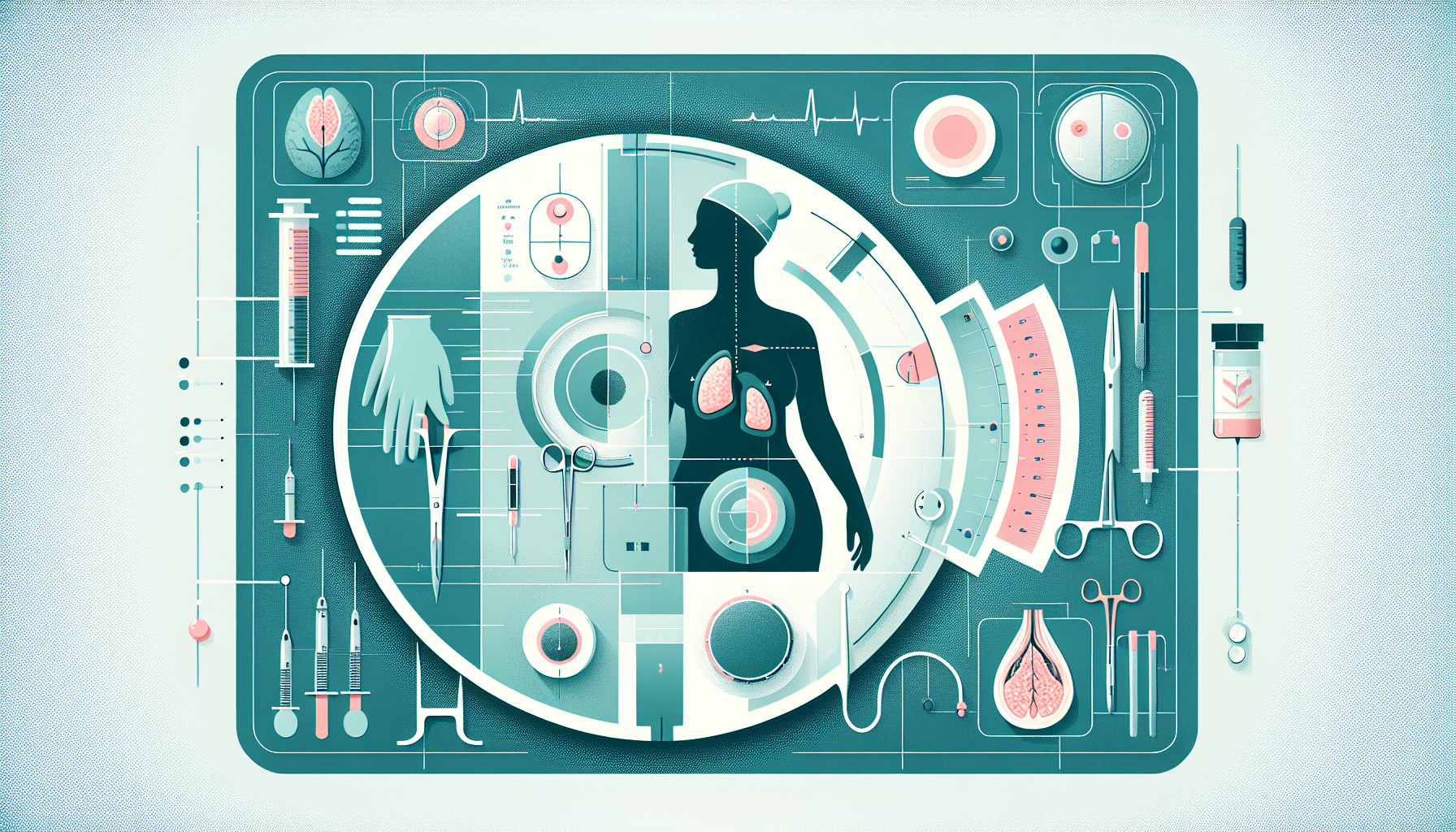Our Summary
This research paper explores the risks and outcomes related to two types of mastectomy (breast removal surgery): prophylactic (preventive) and therapeutic (treatment for existing cancer). The study used data from the American College of Surgeons National Surgical Quality Improvement Program, examining patients who had these surgeries between 2007 and 2012.
The majority of patients (99.5%) studied had therapeutic mastectomies, while a small fraction (0.5%) had prophylactic mastectomies. Findings showed that those who had the preventive surgery were typically younger and more likely to be white. These surgeries also generally took longer.
The important finding here is that while there wasn’t a significant difference in death rates between the two groups, there was a potential increase in 30-day post-surgery complications for those who underwent prophylactic mastectomies. Specifically, these patients showed a higher likelihood of developing deep vein thrombosis (DVT), a dangerous condition where blood clots form in deep veins.
Even after adjusting for age and surgery length, the risk of DVT was still about six times higher for those who had prophylactic mastectomies. The study suggests that doctors should consider strategies to reduce this risk when performing prophylactic mastectomies.
FAQs
- What are the two types of mastectomies discussed in the research paper?
- What was the main difference found between the outcomes of prophylactic and therapeutic mastectomies?
- What risk should doctors consider when performing prophylactic mastectomies according to the study?
Doctor’s Tip
One helpful tip a doctor might tell a patient about mastectomy is to be aware of the potential risk of developing deep vein thrombosis (DVT) after surgery, especially for those undergoing prophylactic mastectomies. Patients should follow their doctor’s recommendations for post-operative care, including movement exercises, compression stockings, and blood thinners, to help reduce the risk of DVT. It’s important to communicate any symptoms of swelling, pain, or redness in the legs to your healthcare provider promptly.
Suitable For
Overall, patients who are recommended for mastectomy are typically those with a high risk of developing or already diagnosed with breast cancer. Prophylactic mastectomies are often recommended for individuals with a strong family history of breast cancer, genetic mutations such as BRCA1 or BRCA2, or a personal history of breast cancer in one breast and a high risk of developing it in the other breast.
On the other hand, therapeutic mastectomies are recommended for patients who have been diagnosed with breast cancer and are undergoing treatment to remove the cancerous tissue. In some cases, patients may opt for a mastectomy over other treatment options such as lumpectomy (removal of only the tumor) or radiation therapy.
Ultimately, the decision to undergo mastectomy is a personal one that should be made in consultation with a healthcare provider. It is important for patients to weigh the risks and benefits of the surgery, as well as consider their individual circumstances and preferences.
Timeline
Before the mastectomy, the patient typically undergoes various tests and consultations to determine the necessity of the surgery. They may also have discussions with their healthcare team about the potential risks and benefits of the procedure.
After the mastectomy, the patient will likely experience physical discomfort, swelling, and limited mobility in the affected area. They may also need to adjust to changes in their appearance and cope with emotional and psychological challenges. Follow-up appointments with the healthcare team will be necessary to monitor healing, address any complications, and discuss potential reconstruction options. Post-surgery, patients may also undergo additional treatments such as chemotherapy or radiation therapy, depending on the reason for the mastectomy. Overall, the patient will need ongoing support and care throughout their recovery process.
What to Ask Your Doctor
Some questions a patient should ask their doctor about mastectomy include:
- What are the risks and potential complications associated with mastectomy surgery?
- What is the difference between prophylactic and therapeutic mastectomy, and which option is recommended for my specific situation?
- What is the recovery process like after mastectomy surgery, and what can I expect in terms of pain and discomfort?
- Are there any long-term effects or complications I should be aware of after undergoing mastectomy?
- What are the options for breast reconstruction following mastectomy, and when can this procedure be performed?
- How will mastectomy impact my risk of developing breast cancer in the future?
- Are there any lifestyle changes or precautions I should take after mastectomy surgery?
- What support services or resources are available to help me cope with the emotional and psychological effects of mastectomy?
- How often will I need follow-up appointments or screenings after mastectomy surgery?
- Are there any specific steps I can take to reduce the risk of complications, such as deep vein thrombosis, following mastectomy surgery?
Reference
Authors: Hendrix RJ, Lee C, Friedrich AK, Rouanet E, Larkin AC, LaFemina J. Journal: Clin Breast Cancer. 2019 Jun;19(3):e428-e432. doi: 10.1016/j.clbc.2019.01.008. Epub 2019 Jan 31. PMID: 30876714
